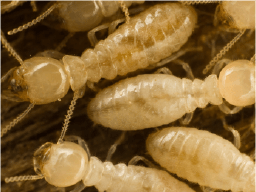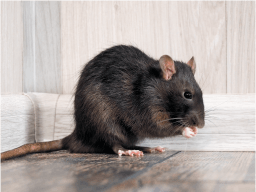Black-Legged Tick
Need to get rid of ticks? Read on to learn the answers to all of your important questions. Need help? Call our professionals today to get started.
Schedule Today!What Is The Black-Legged Tick?
The black-legged tick, also commonly called the deer tick or the bear tick, is a member of the hard-bodied tick family that can be found in the eastern and northern Midwest portion of the United States. The black-legged tick has seen a growth in recognition over the past few decades as it is the primary vector for Lyme disease in the United States.
Black-legged, or deer ticks, are active during any season when temperatures are above freezing. Black-legged tick larvae emerge in early summer and are fully active during the height of the summer, July through September. Nymph black-legged ticks are active in the summer of the following year. Tick larvae, it is widely believed, cannot transmit diseases to their hosts. It is thought that most disease infections are transmitted by nymphs because they are much harder to detect than their adult counterparts.
What Do Black-Legged Ticks Look Like?
Black-legged ticks have different appearances depending on the sex of the tick, though, as their name suggests, both sexes of this tick have black legs. Female black-legged ticks are red/orange with a brown dorsal shield. Male black-legged ticks, on the other hand, are typically a bit smaller than female black-legged ticks, but are brown in color with brown dorsal shields.
Where Do Black-Legged Ticks Live?
Black-legged ticks are most common in New England. You can find them in tall grasses that line mixed forests, but don’t be fooled that ticks only live in forests away from humans. Black-legged ticks can commonly be found in grasses next to forests in both suburban and urban areas.
What Diseases Do Black-Legged Ticks Carry?
Black-legged ticks are disease vectors for many different diseases. Aside from being vectors for Lyme disease, black-legged ticks can also transmit Anaplasmosis, human Babesiosis, and Powassan virus.
Male black-legged ticks do not feed, and unfed female Eastern black-legged ticks are easily identified by their red/orange body. If you come across a tick who has not fed, she will be flat in shape. If you find one that has fed recently, her body will be bulbous and full, resembling a tiny balloon.
Find A Pest Specialist For Tick Control
If you are concerned about tick control for your home, please give us a call or fill out the form on this page. PestControlExperts.com is a team of experts who are highly qualified to provide the best recommendations for you and your home, no matter which part of the United States you live in.
Call 855-891-5410














